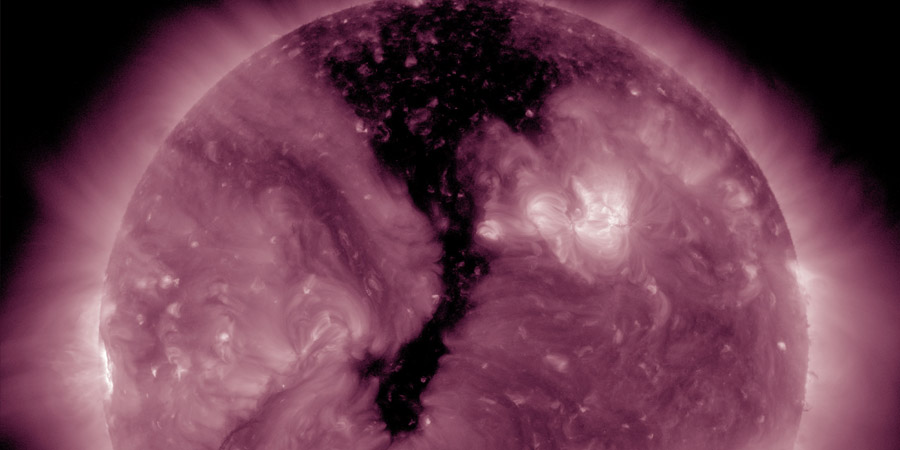Coronal hole faces Earth
Thursday, 24 March 2016 19:07 UTC

A trans equatorial extension of the northern hemisphere polar coronal hole is now facing Earth. This coronal hole is now sending an enhanced solar wind stream towards Earth which will likely cause enhanced geomagnetic conditions in two to three days from now.
It's been a rather boring period when it comes to space weather the past few days. Solar flares hardly manage to reach the C-class threshold and sunspot regions are scarce. The Aurora Borealis and Aurora Australis here on Earth have been confined to the high latitudes as there has hardly been any geomagnetic activity worth mentioning.
That will change in a few days as a trans equatorial coronal hole now faces Earth. We are possibily already feeling some effects of some northern parts of this coronal hole as the solar wind speed has been elevated the past few days and is now close to 500km/s. The north-south direction of the IMF (Bz) is however pointing northward and this is known to surpress most geomagnetic activity.
But still, we should feel the effects of this coronal hole in about two to three days (late on Saturday or Sunday) here at Earth and this will likely caused enhanced auroral conditions at high latitude locations. Active geomagnetic conditions (Kp4) are likely with a chance for minor G1 geomagnetic storming conditions when the solar wind stream arrives. Exciting times ahead for high latitude sky watchers!
Thank you for reading this article! Did you have any trouble with the technical terms used in this article? Our help section is the place to be where you can find in-depth articles, a FAQ and a list with common abbreviations. Still puzzled? Just post on our forum where we will help you the best we can!
Latest news
Latest forum messages
Support SpaceWeatherLive.com!
A lot of people come to SpaceWeatherLive to follow the Sun's activity or if there is aurora to be seen, but with more traffic comes higher server costs. Consider a donation if you enjoy SpaceWeatherLive so we can keep the website online!

Space weather facts
| Last X-flare | 2025/03/28 | X1.1 |
| Last M-flare | 2025/04/01 | M5.6 |
| Last geomagnetic storm | 2025/03/27 | Kp5 (G1) |
| Spotless days | |
|---|---|
| Last spotless day | 2022/06/08 |
| Monthly mean Sunspot Number | |
|---|---|
| February 2025 | 154.6 +17.6 |
| Last 30 days | 128.5 -22.7 |


